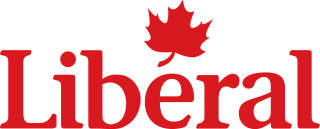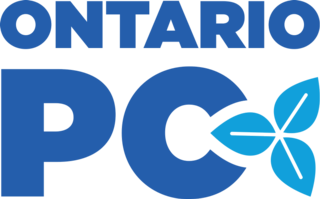
The Liberal Party of Canada is the longest-serving and oldest active federal political party in Canada. The party has dominated federal politics for much of Canada's history. The Liberals held power for almost 70 years in the 20th century. As a result, it has sometimes been referred to as Canada's "natural governing party".

The 1993 Canadian federal election was held on October 25 of that year to elect members to the House of Commons of Canada of the 35th Parliament of Canada. Fourteen parties competed for the 295 seats in the House at that time. It was one of the most eventful elections in Canada's history, with more than half of the electorate switching parties from the 1988 election. The Liberals, led by Jean Chrétien, won a strong majority in the House and formed the next government of Canada.
The Progressive Party of Canada was a federal-level political party in Canada in the 1920s until 1930. It was linked with the provincial United Farmers parties in several provinces, and it spawned the Progressive Party of Saskatchewan, and the Progressive Party of Manitoba, which formed the government of that province. The Progressive Party was part of the farmers' political movement that included federal and provincial Progressive and United Farmers' parties.

The 2004 Canadian federal election, was held on June 28, 2004, to elect members of the House of Commons of Canada of the 38th Parliament of Canada. The Liberal government of Prime Minister Paul Martin lost its majority, but was able to form a minority government after the elections. The main opposition party, the newly amalgamated Conservative Party of Canada, improved its position but with a showing below its expectations.

The Progressive Conservative Party of Ontario, often shortened to the Ontario PC Party or simply the PCs, colloquially known as the Tories, is a centre-right political party in Ontario, Canada. The party has been led by Doug Ford since March 10, 2018.

The 1984 Canadian federal election was held on September 4 of that year to elect members of the House of Commons of Canada of the 33rd Parliament of Canada. The Progressive Conservative Party, led by Brian Mulroney, won the largest landslide majority government in Canadian history, while the Liberals suffered what at that time was the worst defeat for a governing party at the federal level. Only the Progressive Conservatives faced a larger defeat, when cut to two seats in 1993.

The Conservative Party of Canada has gone by a variety of names over the years since Canadian Confederation. Initially known as the "Liberal-Conservative Party", it dropped "Liberal" from its name in 1873, although many of its candidates continued to use this name.
The New Reform Party of Ontario was a minor provincial political party in Ontario, Canada, that promoted a populist, fiscally conservative, socially conservative, libertarian, and localist ideology.
In Canada, Her Majesty's Loyal Opposition, or simply the Official Opposition is usually the largest parliamentary opposition party in the House of Commons of Canada, either on its own or as part of a governing coalition, although, in certain unusual circumstances, it may be a third or fourth-largest party or even the largest party.

Monte Kwinter is a former politician in Ontario, Canada. He was a Liberal member of the Legislative Assembly of Ontario from 1985 until 2018. He represented the riding of York Centre for much of that period. Kwinter was a cabinet minister in the government of David Peterson from 1985 to 1990 and also in Dalton McGuinty's government from 2003 to 2007. Kwinter is the oldest person ever to be an MPP in Ontario.
The Province of Ontario is governed by a unicameral legislature, the Legislative Assembly of Ontario, which operates in the Westminster system of government. The political party that wins the largest number of seats in the legislature normally forms the government, and the party's leader becomes premier of the province, i.e., the head of the government.
The Green Party of Ontario fielded 102 candidates in the 2003 provincial election in Ontario, Canada, none of whom were elected. The only riding which the party did not contest was Oakville. Zakaria Belghali had been selected as the GPO candidate, but did not collect enough signatures to have his candidacy validated by Elections Ontario.

Conservatism in Canada is generally considered to be primarily represented by the modern-day Conservative Party of Canada in federal party politics, and by various centre-right and right-wing parties at the provincial level. The first party calling itself "Conservative" in what would become Canada was elected in the Province of Canada election of 1854.
The Progressive Conservative Party of Manitoba ran 38 candidates in the 1953 provincial election, under the leadership of Errick Willis. Twelve of these candidates were elected, and the Progressive Conservatives formed the official opposition in the legislature. Some candidates have their own biography pages; information about others may be founded here.
This article provides a timeline of elections in Canada, including all the provincial, territorial and federal elections. The information starts from when each province was formed or entered the Confederation, and continues through to the present day.

This article is the Electoral history of Sir John A. Macdonald, the first Prime Minister of Canada.
This article is the Electoral history of Stephen Harper, the twenty-second Prime Minister of Canada. Harper served three terms from 2006 to 2015.







